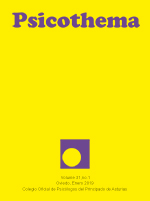Abstract
Background: Intracranial self-stimulation (ICSS) is a technique by which rats press a lever to stimulate their brains through an electrode chronically implanted in brain reward areas. Currently only two laboratories in the world, one in India and one in Spain, are intensively studying the effect of this kind of deep brain stimulation on learning and memory. This paper will present the main findings. Methods: Different groups of young and old healthy and braindamaged rats with electrodes implanted in the medial forebrain bundle received a treatment of ICSS after being trained in several paradigms of implicit and explicit learning. Memory was tested over short and long-term periods. Structural and molecular post-mortem analyses of their brains were examined in relation to memory results. Results: ICSS enhances implicit and explicit memory, especially in animals showing poor performance in the learning tasks, such as brain-damaged subjects. At the structural and molecular level, ICSS enhances size and dendritic arborization and promotes neurogenesis in specific hippocampal areas. ICSS also regulates the expression of genes related to learning and memory. Conclusions: Through activating reward and neural plasticity mechanisms, ICSS in the medial forebrain bundle is a promising technique for memory-enhancing treatments.
